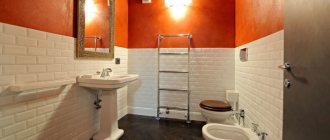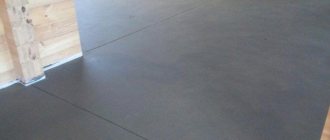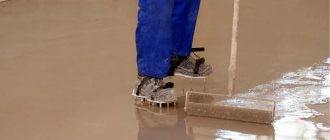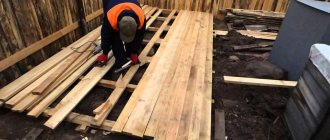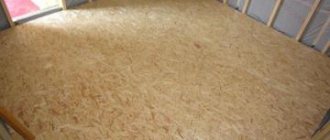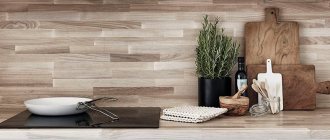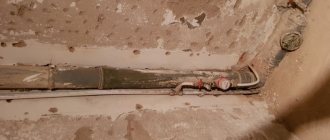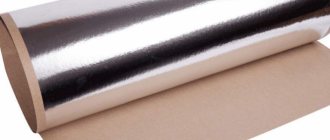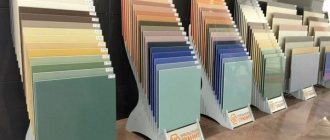Natural material – wood – is excellent for flooring. In order for it to be used for a long time, not to deteriorate from humidity, not to creak, it must be properly processed and mounted. The best option is considered to be a floor made of tongue-and-groove boards - no gaps, smooth, reliable. But how do you choose the material, how to make such a coating? It's simple: study the rules of selection and technology for performing work.
tongue and groove floor
tongue and groove board
Solid lumber with milled grooves and ridges that provide a gap-free surface. Thanks to this, quick fastening occurs, increasing the strength of the structure.
The connecting lock can be found on 2 or 4 sides of the product, and special bevels are made on the reverse side, allowing air to circulate inside the floor. The thickness of the boards is the same, so the floor is smooth, and the planes of the boards are sanded.
Attention! Cheap tongue and groove boards may only be processed on one side and may not have ventilation holes.
With proper installation of the material, there are no gaps, which prevents squeaks and wear.
Reviews
A tongue and groove board is a convenient and excellent material. Many users noted that such boards are much more convenient than regular flooring boards. They are characterized by long-term operation (up to several decades) and are resistant to the appearance of various defects, cracks and crevices.
Some of the negative reviews came from owners of private houses - they note that tongue-and-groove boards dry out more quickly, especially if the installation was done incorrectly or the material was initially damp.
With proper installation and care, a tongue and groove floor will last a very long time - several decades.
In general, consumer reviews of tongue and groove boards are positive; such material will last quite a long time, and with proper installation work it can last up to several decades.
Types of tongue and groove boards
- Spruce, pine: low cost, poor moisture resistance, requires mandatory varnishing. It is recommended to treat the reverse side with special protective agents.
Larch lumber
- Tongue-and-groove larch lumber is not exposed to insects and has good moisture resistance. This rock is not varnished, but the varnished material has a longer service life. It has a rich shade and beautiful structure. The disadvantage is the high price.
- Ash, oak: has average resistance to moisture, hard structure, wear resistance and high cost.
Wood type
If you want to use boards made of natural wood, you should carefully consider the possible options.
Here are the types of wood that are most often used for finishing:
Coniferous trees
Most often, such boards have good strength due to the natural resins with which they are impregnated. They are moisture resistant, not susceptible to rot and fungus. Due to vapor permeability, coniferous wood material allows you to create a good microclimate.
Oak
Oak wood has an interesting texture that gives the interior presentability and solidity. Its price is high, but the boards are incredibly durable and reliable. They do not deteriorate from moisture, they only become stronger under its influence. Oak has good soundproofing properties, which also plays an important role.
Larch
It is similar to oak in some properties: durable, resistant to fungus and mold, promotes a favorable microclimate, etc. It is also resistant to high humidity, durable and incredibly reliable. Another advantage of larch wood is the huge selection of shades, allowing you to choose the ideal option for any room.
Cedar
The high cost of these boards speaks of their undoubted quality, amazing characteristics and properties. The structure of cedar wood is unique, and it also has a healing effect. She is not afraid of high humidity and other negative influences. Cedar boards help create a very comfortable microclimate in an apartment or house.
There are a huge number of other types of wood that are often used to create floorboards. For example, teak has a delightful aroma, beautiful texture and good strength.
Birch
Birch is very environmentally friendly and retains heat well, making it comfortable to stay indoors in winter. It also contributes to the creation of a good microclimate. Ash is also loved by many customers because it is a durable and reliable material.
If you carefully select wood floor boards, you will be able to find a suitable option. The main thing is to consider your own needs, desires, as well as the appearance of the room and the characteristics of the material.
Advantages, disadvantages of tongue and groove lumber
The tongue and groove material has a sufficient number of positive qualities over others:
- The tongue-and-groove lock makes it possible to evenly distribute loads and increase service life.
- There are grooves on the reverse side for ventilation, which eliminates the possibility of fungus.
- The floor covering provides good heat and sound insulation.
- The locking connection makes installation of the flooring quick.
- Standard sizes, which speeds up the laying of tongue and groove boards.
- No chemical components are used in production.
- The floor covering looks great.
- The lumber provides a seamless finish.
- To tidy up the appearance after use, it is enough to sand (sand) and varnish.
- A floor using such materials fits into the interior.
Grooved flooring has disadvantages: the surface must be periodically coated with paints and treated with antiseptics. Another negative point is that they are expensive.
